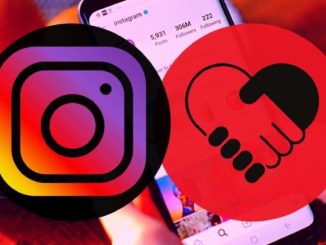
These two words sum up the power of storytelling and explain why it works—human interest.
There are two more words in the form of a question that the best communicators use. So what?
When you veer into dry facts, it’s over. Plain facts are boring. You instinctively know you can’t bore people into giving you their attention, much less buy art from you. Do yourself a solid and resolve to do your best to quit bad habits that include finding reasons to avoid telling Your Story.
There are terrific books on using Story as the centerpiece of your marketing. Building a StoryBrand: Clarify Your Message, So Customers Will Listen by Donald Miller. And Story Driven: You don’t need to compete when you know who you are by Bernadette Jiwa. Both are business books primarily, but the lessons and insights differ. The messages from both apply to artist-entrepreneurs.
The Story-Driven Framework by Bernadette Jiwa
Strategy – align opportunities, plans, & behavior
Vision – aspiration for the future
Purpose – a reason to exist
Values – guiding beliefs
Backstory – journey to now
I suggest you read those essential points a few times to let them sink in deeply.
Bernadette tells us there is an alternate path to success that doesn’t hinge on the concept of competing to win. I think this idea will resonate more with artists than the general population.
Even If You Don’t View Selling Art as a Contest, You Must Show Up
Perhaps you’ve heard it said (maybe even on this blog) that people buy the artist as much as the art. That’s a tough one for some artists who believe art should sell on its merits as is. You know, without the artist’s name or any history or relevant facts about the art and artist.
The Power of the Silent “So What?” Slays Interest
When you say you have an MFA from Rhode Island School of Design, the unspoken reply is, “So what?” If you tell me going to RISD was a lifelong ambition growing up because your favorite artist, Jenny Holzer, is a graduate, you gain my interest. If you further tell me that getting into RISD was nearly impossible for personal and financial reasons and that the admission process was the easy part, I’m all in. I want to know more because you have intrigued me with the human-interest aspect of your Story. I need to know what happened.
You’ve Got More Storytelling Pizazz Than You Think
It may seem to you that your Story is not as dramatic as the example I’ve given. You might be right to some extent. What is more likely is your Story is unique, more than you realize. It’s natural. You have lived every day of your life, so how can you not take things for granted that others find fascinating. Besides that, it’s a good bet you are modest when it comes to tooting your horn.
It is typical for many people, and perhaps more so for sensitive artist-types to tamp down touting themselves and their work. Such conditions make the argument of “art for art’s sake” stronger. I get how anyone would feel that art should sell on its merits as a work of art. It seems the natural order of things is that it should be that way. But it’s just not so now and never was. More goes into the psychology of why people buy art.
Backstories Are Part of the Arc of Storytelling
In a situation where all things are relatively equal in the “art for art’s sake” category for potential collectors who are considering several pieces, the backstory will seal the deal. Your brand, reputation, and backstory are all part of your arc of storytelling.
Most buyers intend to show their new artwork in a place of honor. They anticipate comments and questions about it. You can expect that they will enjoy sharing engaging tidbits they have about the artist because they bought the artist and the artist’s Story as much as the art.
Storytelling about Your Art Creates Proud, Fun Moments
Just imagine the pride a new buyer has in mentioning that Georgia O’Keeffe inspires this artist. And how the artist went to great lengths to follow in O’Keeffe’s footsteps.
The new owner is proudly telling an appreciative viewer that you can see the O’Keeffe influence in her work when you know details from the artist. And that’s why they had to buy it. And now that viewer is educated and informed about the artist.
“As an artist, your stories create a conversation for you when you aren’t there.” Barney Davey
It’s Phenomenal How Word-of-Mouth Works!
Word-of-mouth happens because you enable it with storytelling. It lights the path from an avid collector to an evangelist. Storytelling cultivates art buyers who exert influence in your favor. They’re happy to have evolved in the relationship with you, starting with stories of your art and you.
Art Chose You
I’ve often said most artists did not choose to become artists; it’s more like art selected them to become artists. You know it’s not the easiest career path on multiple levels. But you chose it nevertheless because you were compelled to do so. Perhaps over the objection of your family who hoped you’d be a teacher, a doctor, or any career with a steady salary.
Indeed, there is some version of what I just said that is your Story. You need to flesh it out, make it real, and find the human interest angle in it. Was there a life-changing moment, or did you overcome an unforeseen difficulty? Did you receive an opportunity from the most unexpected source? What zigs and zags did your path to becoming an artist take?
Your history is an outline waiting for the twists and turns that make it unique to you. Every piece of art you make traces back to your origin story of why and how you became an artist. It would help if you never embellished to make it enjoyable. Most often, it takes time to drill down to the real nuggets.
Every Piece of Art Has a Backstory
Up to now, the conversation is about your backstory, which is essential. Storytelling goes beyond and delves into the truth that all art has a backstory. Read this 2008 interview, Every Piece of Art Has a Backstory, with the artist Mary Heilmann. She discusses her formative years in California, evolution from literature to ceramics to painting, and many inspirations, including video games and roadways.
There is no guarantee your Story will come easy. Sometimes you must dig deep for it.
Here is a fictional interview showing how to get the heart of the matter:
You chose to follow Georgia O’Keeffe and use her life and art as an influence. Why?
– Because she is a strong, independent woman and a free thinker.
Okay, but why are those attributes important to you?
– Because I want to live life on my terms, not dictated by other people.
Why is living life on your terms as a free thinker necessary?
– Because I have seen what happens when a person takes charge of their life.
Tell me more.
– Independence, peace of mind, clarity, and purpose all come into alignment, which allows an artist to live as their higher self and be of service in ways not possible when others rule your life.
Keep going.
– I believe women hold the keys to the safety, security, sanctity, and sanity of our world. I want to inspire women to become leaders. If we avoid war, famine, global warming, and unacceptable inequality, women must take control.
Okay, that little made-up scenario may or may not resonate with you. Hopefully, it is a little insight into what happens when you drill down with total honesty and self-awareness. You’ll get to that objective spot where the truth lies and where the foundations of your Story exist.
You can drill down in the same Socratic method with the art you create. Nothing happens in a vacuum. Everything around us informs, inspires, incites, and moves us in ways we don’t always recognize without introspection. The lyric and melody of a song, the color scheme of some object, the art of your heroes, the shape of a bicep, the undulating curves of a roadster, how light shimmers and falls through tree limbs at sunset, the sound of a brook babbling or children laughing at something silly, and so on.
It’s All in There Even If You Don’t Notice
Nothing escapes your notice. Your conscious mind may not always “take a note to self,” but your unconscious mind rarely lets anything slip. When you conceptualize a new piece, any or all your overt and hidden influences come to bear.
You don’t need to do a psychological evaluation and breakdown of every instance and nuance in your life to do a backstory. It’s just helpful to recognize what influences you and your work. When you help me understand you and how your work came into existence, you draw me closer. Just as with friends and lovers, only when we both let our guard down do we have a chance to make a meaningful connection.
Selling Art Is Not Serendipitous
Those people who most likely align with you in such ways that cause them to want to buy your artwork may not have their guard down initially. Like a friendly smile, your authentic backstory is an invitation for a buyer to be open and let your work inspire and influence them.
Entice your potential patrons with your storytelling and then let the art for art’s sake value of your work close the deal.
My Story
I write this blog because it is an artistic endeavor for me. I have always had a way with words and the desire to use them. The blog is my creative outlet; it is my art if you will. I’m inspired to help artists because my mother, a talented visual artist, taught me to love art early.
In a decades-long pursuit as an ad exec for an art business magazine and trade show publisher, I had the chance to work with many successful artists. I learned powerful lessons from their stories. Their experiences, good and bad, became priceless bits of wisdom that help me to help artists.
Having the chance to use my words, skills, and experience to be a guiding light for artists gives me joy and a sense of satisfaction. I was drawn to do this work. I aim for my words to provide you with enlightenment, encouragement, and pleasure.







Be the first to comment